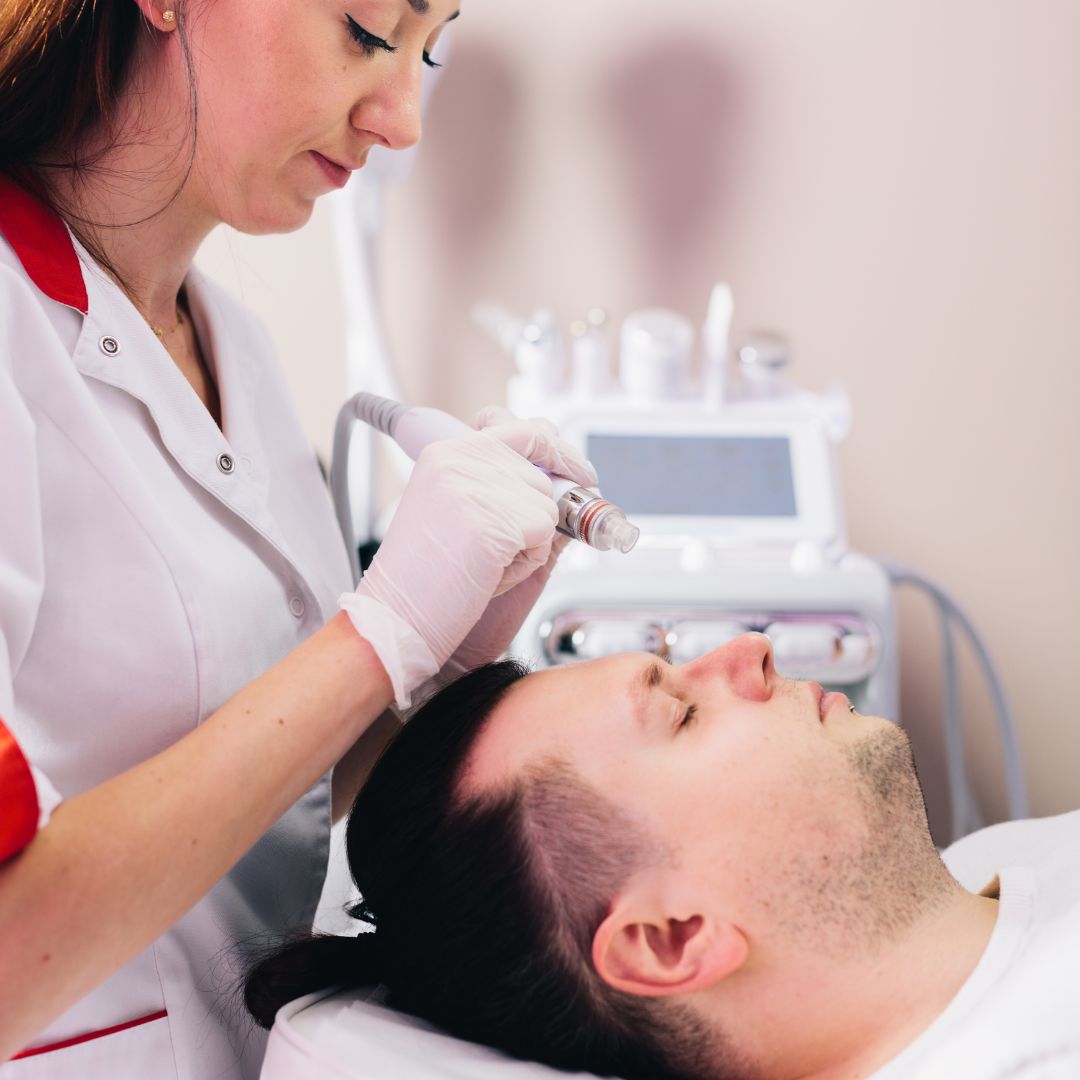HydraFacial is a popular non-invasive facial treatment that has gained widespread attention for its ability to cleanse, exfoliate, hydrate, and rejuvenate the skin. This innovative facial combines advanced technology with specialized serums to deliver noticeable results without downtime. Here’s the science behind how HydraFacial works and why it’s effective for all skin types:
1. Cleansing and Exfoliation
The first step in a HydraFacial is cleansing and exfoliating the skin using a specialized tool that combines gentle suction and a liquid vortex to remove dead skin cells, dirt, and oil from the surface of the skin. This exfoliation reveals fresh, new skin cells and prepares the skin for the next steps in the treatment.
Science Behind It: The exfoliation process is typically performed using a combination of physical and chemical exfoliants. The device gently abrades the skin’s outer layer, while hydrating serums are delivered into the skin. This step removes dead cells, allowing serums to penetrate more effectively, which enhances overall skin texture and tone.

2. Acid Peel
Unlike traditional peels that can be harsh and require downtime, HydraFacial uses a mild, non-irritating chemical peel to gently exfoliate the skin. The peel helps to break down the bonds that hold dead skin cells together, further improving skin texture and promoting collagen production.
Science Behind It: The peel typically uses a blend of glycolic acid or salicylic acid to dissolve the upper layers of dead skin cells. These acids are chosen for their ability to exfoliate the skin without causing irritation, making the treatment suitable for sensitive skin types.
3. Extraction
One of the most distinctive features of HydraFacial is its gentle extraction process. The treatment uses suction to clean out impurities from the pores, including excess oil, blackheads, and debris, without causing any discomfort or irritation. This is especially beneficial for individuals with oily or acne-prone skin.
Science Behind It: The device creates a vacuum-like suction that is designed to target clogged pores. The mild suction lifts out impurities, reducing blackheads and congestion. At the same time, a moisturizing serum is delivered into the skin, preventing dryness that can occur after extractions.
4. Hydration
Hydration is a core element of the HydraFacial treatment. After exfoliation and extraction, the skin is infused with hydrating serums that are tailored to the individual's skin type and needs. These serums contain a combination of antioxidants, peptides, hyaluronic acid, and other nourishing ingredients that replenish and hydrate the skin.
Science Behind It: Hyaluronic acid is a key ingredient in many HydraFacial serums due to its ability to retain moisture. It can hold up to 1,000 times its weight in water, providing intense hydration to the skin. Additionally, peptides help stimulate collagen production, improving the skin’s firmness and elasticity over time.
5. Antioxidant and Peptide Infusion
HydraFacial serums often contain antioxidants like Vitamin C and growth factors such as peptides. These ingredients protect the skin from environmental damage, reduce inflammation, and promote healing, helping to improve the overall health and appearance of the skin.
Science Behind It: Antioxidants help neutralize free radicals, which are unstable molecules that damage skin cells and accelerate the aging process. Peptides stimulate collagen production, which strengthens the skin, enhances its elasticity, and reduces fine lines and wrinkles.

6. LED Light Therapy
Many HydraFacial treatments include a final step of LED light therapy, which targets specific skin concerns like acne, pigmentation, or aging. Red LED light helps to stimulate collagen production and reduce fine lines, while blue LED light targets acne-causing bacteria.
Science Behind It: LED light therapy uses specific wavelengths of light to penetrate the skin and promote various healing processes. Red light stimulates cellular repair and collagen production, while blue light has an antibacterial effect that helps reduce acne outbreaks.
Why It Works for All Skin Types:
HydraFacial is effective for all skin types, from dry and sensitive to oily and acne-prone skin. This is because the treatment is customizable to address a range of skin concerns, such as dehydration, fine lines, pigmentation, acne, and sun damage.
Sensitive Skin: The treatment uses gentle exfoliation with no downtime, making it safe for sensitive skin. The mild acid peel and hydrating serums are formulated to avoid irritation.
Oily or Acne-Prone Skin: The extraction process is highly effective for deep cleansing pores and reducing blackheads. The treatment can also include anti-inflammatory serums that soothe the skin and reduce acne breakouts.
Aging Skin: The combination of exfoliation, hydration, and peptides helps to reduce the appearance of fine lines and wrinkles while boosting collagen production.
Dry or Dehydrated Skin: The intense hydration provided by the treatment restores moisture to dry or dehydrated skin, improving its texture and appearance.
Key Benefits:
Non-invasive: There is no need for needles or invasive procedures, making it a safe, comfortable option for those looking for skin rejuvenation.
Customizable: HydraFacial treatments can be tailored to individual skin types and concerns, ensuring maximum benefit for everyone.
No Downtime: Unlike more aggressive treatments, HydraFacial has little to no downtime, meaning clients can return to their normal activities immediately after the procedure.
Conclusion
The science behind HydraFacial is based on a combination of deep cleansing, exfoliation, hydration, and targeted treatments that work synergistically to improve the skin’s appearance. The use of advanced technology, combined with nourishing serums, makes HydraFacial effective and safe for all skin types. Whether you're looking to address specific skin concerns like acne, aging, or pigmentation, or simply want to refresh and rejuvenate your complexion, HydraFacial offers a versatile solution with visible, long-lasting results.